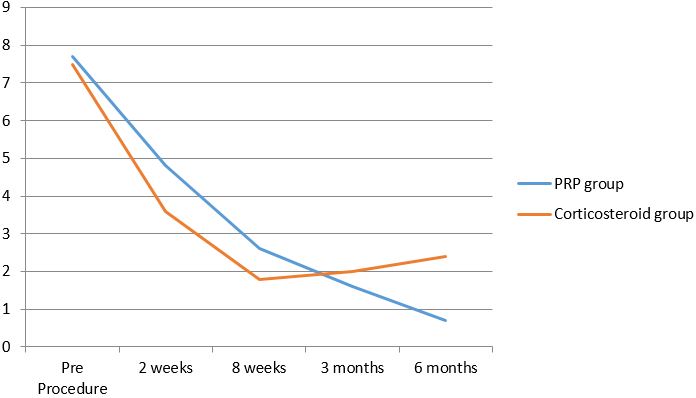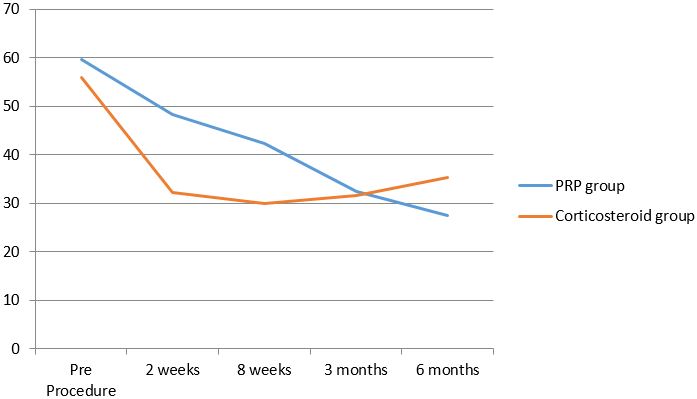A prospective study to compare efficacy of local corticosteroid and platelet rich plasma injection for treatment of lateral epicondylitis
Yadav SS1, Shekhawat YS2*, Gupta S3, Kirar S4, Utekar R5
1 S S Yadav, Department of Orthopedics, G R Medical College, Gwalior, Madhya Pradesh, India.
2* Yogendra Singh Shekhawat, Department of Orthopedics, G R Medical College, Gwalior, Madhya Pradesh, India.
3 S Gupta, Department of Orthopedics, G R Medical College, Gwalior, Madhya Pradesh, India.
4 S Kirar, Department of Orthopedics, G R Medical College, Gwalior, Madhya Pradesh, India.
5 R Utekar, Department of Orthopedics, G R Medical College, Gwalior, Madhya Pradesh, India.
Background: Several modalities of management are available for lateral epicondylitis which is a common cause of pain around elbow. Corticosteroid for long time remained gold standard treatment of choice but Studies have suggested the use of platelet rich plasma (PRP) as a safe and effective choice of therapy. Purpose of this study was to evaluate the efficacy of autologous PRP vs steroid injection in treatment of chronic lateral epicondylitis.
Methods: It was a Randomized control trial of 60 cases with at least 6 months of symptoms. PRP was prepared from 40 ml autologous venous blood by double centrifugation method. Patients were followed up to 6 months. All patients had a baseline assessment including Visual Analogue Scale (VAS) and Disability assessment of Shoulder and Hand score (DASH).
Results: Mean age of patients was 36.5 and 38.3 years for PRP and Corticosteroid group respectively. Success was defined as reduction of pain (VAS) without re-intervention after a follow up of 6 months. Steroid treatment showed better outcome in short term and PRP showed better outcome in long term. Both VAS and DASH score showed significant progressive improvement with no complications with PRP whereas with steroid injection there was recurrence of symptoms after 3 months.
Conclusion: Treatment of patients with Lateral Epicondylitis with PRP decreases pain and significantly increases function, even after a follow-up of 6 months.
Keywords: PRP, Corticosteroid, Tennis elbow, VAS, DASH
| Corresponding Author | How to Cite this Article | To Browse |
|---|---|---|
| , , Department of Orthopedics, G R Medical College, Gwalior, Madhya Pradesh, India. Email: |
Yadav SS, Shekhawat YS, Gupta S, Kirar S, Utekar R, A prospective study to compare efficacy of local corticosteroid and platelet rich plasma injection for treatment of lateral epicondylitis. ojmpc. 2018;24(1):8-13. Available From https://ojmpc.com/index.php/ojmpc/article/view/62 |




